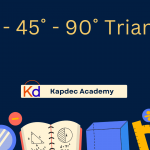Writing a great AP Physics lab report is about more than just filling in data — it’s about communicating your understanding of scientific principles, analysis, and conclusions clearly and effectively. A well-structured lab report not only helps you score better but also improves your ability to think like a physicist — logically, experimentally, and analytically.
This guide breaks down each section of an AP Physics lab report and offers practical tips to help you write with clarity and precision [1].
1. Understanding the Purpose of a Lab Report
An AP Physics lab report is your opportunity to demonstrate how well you understand experimental concepts, data collection, and interpretation. It is meant to:
- Show how theory connects with experimental results.
- Demonstrate the use of proper scientific reasoning.
- Evaluate your ability to analyze, calculate, and conclude from observed data [2].
Think of your lab report as a scientific story — with a clear beginning (objective), middle (method and data), and end (conclusion and reflection).
2. Structure of an AP Physics Lab Report
A strong lab report follows a clear, logical structure. Below is the standard format:
a) Title and Introduction
- Title: Should be concise but descriptive (e.g., “Determining Acceleration Due to Gravity Using a Simple Pendulum”).
- Introduction: Explain the goal of the experiment, the relevant physics concepts, and the hypothesis. Include equations or theories if applicable.
b) Materials and Procedure
List all the equipment used — with specifications if relevant (e.g., “1.5 m string, stopwatch with 0.01 s precision, protractor”).
Then, write your procedure as numbered steps. Keep it short, but ensure that another student could repeat your experiment based on your description.
c) Data Collection and Observations
Use tables to organize your readings — note measurements, uncertainties, and any qualitative observations (e.g., air resistance, vibration, etc.).
Always include units and significant figures.
Tip: Label columns like this —
| Length (m) | Time for 10 Oscillations (s) | Period (s) | Calculated g (m/s²) |
|---|
d) Data Analysis
This is the core of your report. Analyze your data mathematically and conceptually.
- Perform calculations and show sample work.
- Use graphs where relevant (e.g., Period² vs. Length for a pendulum).
- Mention how you calculated errors and uncertainties.
Tip: Use linear regression when plotting graphs and interpret the slope meaningfully.
e) Results and Discussion
Here, summarize your findings:
- Compare experimental and theoretical values.
- Explain why discrepancies may have occurred (e.g., human error, friction, parallax error).
- Discuss what the data suggests — did it support your hypothesis?
f) Conclusion
State the key takeaway in one clear sentence.
g) References
Always cite textbooks, lab manuals, or online physics resources used.
3. Common Mistakes to Avoid
- Writing without units or uncertainties.
- Skipping sample calculations.
- Copying results without interpretation.
- Failing to discuss sources of error.
- Using vague conclusions like “the experiment worked well.”
Each of these can cost marks in your AP Physics lab report evaluation.
4. How Kapdec Can Help You Improve
Kapdec provides AP Physics lab templates, example reports, and guided exercises to help students structure their work effectively. Tutors also offer personalized feedback on written reports — highlighting weak areas in analysis or explanation.
Kapdec’s question-based approach ensures that you not only record data but understand the “why” behind every experiment.
FAQ’s
What is the purpose of an AP Physics lab report?
The main goal of an AP Physics lab report is to demonstrate your understanding of the experiment — not just what happened, but why it happened. It helps you connect theoretical physics concepts to practical observations. A well-written report also shows your ability to analyze data, identify errors, and draw logical conclusions based on scientific reasoning.
What sections should an AP Physics lab report include?
Most AP Physics lab reports follow a standard structure:
- Title and Objective – What the experiment is about.
- Hypothesis – Your prediction before starting.
- Materials and Procedure – A clear, step-by-step account.
- Data and Observations – Tables, graphs, and raw data.
- Analysis – Calculations, error analysis, and interpretation.
- Conclusion – What you learned and whether your hypothesis was supported.
- References – Any sources or formulas cited.
This structure ensures clarity and consistency, which teachers and AP graders expect.
How can I make my data analysis stand out?
To make your data analysis strong, go beyond just calculating results. Show clear reasoning — explain why trends occur, use graphs to illustrate relationships, and discuss any anomalies or experimental errors. Use precise language and significant figures. Adding a short uncertainty analysis (e.g., percentage error) can also make your report look more professional and AP-ready.
What common mistakes should I avoid in a physics lab report?
Students often:
Neglect to discuss sources of error and improvements.
Avoiding these helps you write a clear, high-scoring report that reflects real scientific thinking.
Skip explaining why results differ from the hypothesis.
Forget to include units in tables or graphs.
Copy procedures without personalization.
Use vague terms like “we did the experiment” instead of describing actions precisely.
How long should an AP Physics lab report be?
There’s no fixed length, but most effective reports are 3–6 pages, depending on the complexity of the experiment. It’s better to be concise and well-organized rather than overly wordy. Focus on clarity, accurate calculations, and logical reasoning instead of lengthy explanations.
Do I need to include calculations in full detail?
Yes — show all major steps in your calculations, including formulas, substituted values, and final answers with units. This shows the evaluator that you understand the physics behind the math. However, for repetitive steps, you can show one example and summarize the rest in a table.
How can I write a strong conclusion?
A strong conclusion should summarize key findings, compare them to your hypothesis, and explain whether your results align with theoretical expectations. Discuss potential errors or limitations, and suggest improvements for future experiments. A reflective tone demonstrates analytical thinking — a skill AP graders value highly.
What tools or software can help with my lab report?
You can use:
- Google Sheets / Excel – For data tables and graphs.
- Logger Pro or Graphical Analysis – To plot motion graphs or analyze sensor data.
- Word or Google Docs – For structuring your final report.
- Kapdec’s AP Physics Resources – For step-by-step lab templates and analysis examples tailored for AP Physics students.
Using professional tools helps you format data neatly and present a more polished report.
Final Thoughts
A well-written AP Physics lab report showcases not only your data but your analytical reasoning and grasp of physical laws. By organizing your report systematically — from hypothesis to conclusion — you communicate your understanding like a true physicist.
With Kapdec’s expert guidance, real lab examples, and one-on-one mentorship, mastering the art of writing effective AP Physics lab reports becomes both achievable and rewarding.






